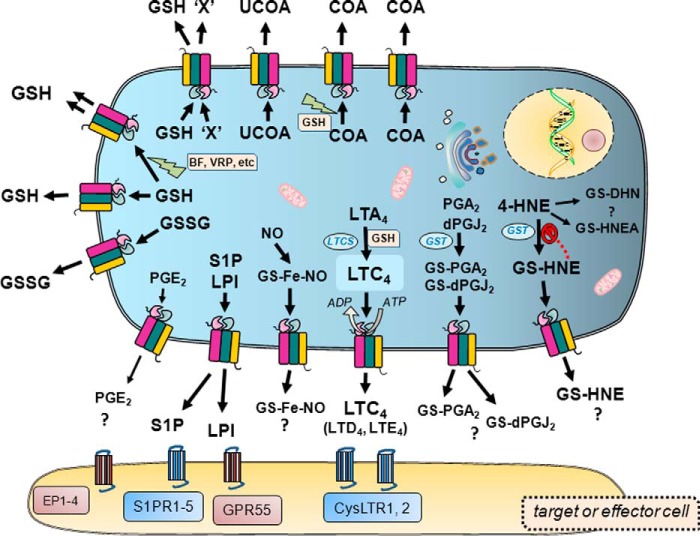FIGURE 2.
ATP-dependent MRP1-mediated transport of endogenous and xenobiotic solutes. The diagram illustrates the diversity of molecules effluxed by MRP1 across the plasma membrane in an ATP-dependent fashion. Included are representative examples of the endogenous/physiological substrates, both proposed and demonstrated, effluxed by MRP1 such as lipid-derived effectors and mediators of cell signaling (and their receptors) implicated in the etiology and progression of multiple human diseases. The best characterized physiologic substrate of MRP1, viz. LTC4, is highlighted, and only in this case is the dependence of transport on ATP depicted. Also shown are the multiple and complex roles of GSH, both as a transported solute and as a stimulant of the transport of other solutes by MRP1. The ATP dependence of MRP1-mediated transport of these molecules is not depicted due to space constraints but is understood. EP1–4 refers to the four subtypes of PGE2 receptors. Abbreviations: GS-DHN, GS-1,4-dihydroxy-nonene; GS-HNEA, GS-4-hydroxy-2-nonenoic acid; BF, bioflavonoid; LTCS, LTC4 synthase; LTD4, leukotriene D4; LTE4, leukotriene E4; COA, conjugated organic anion; dPGJ2, 15-deoxy-Δ(12,14) PGJ2; S1PR1–5, S1P receptors 1–5; UCOA, unconjugated organic anion; VRP, verapamil; 'X', hydrophobic xenobiotic or drug.

